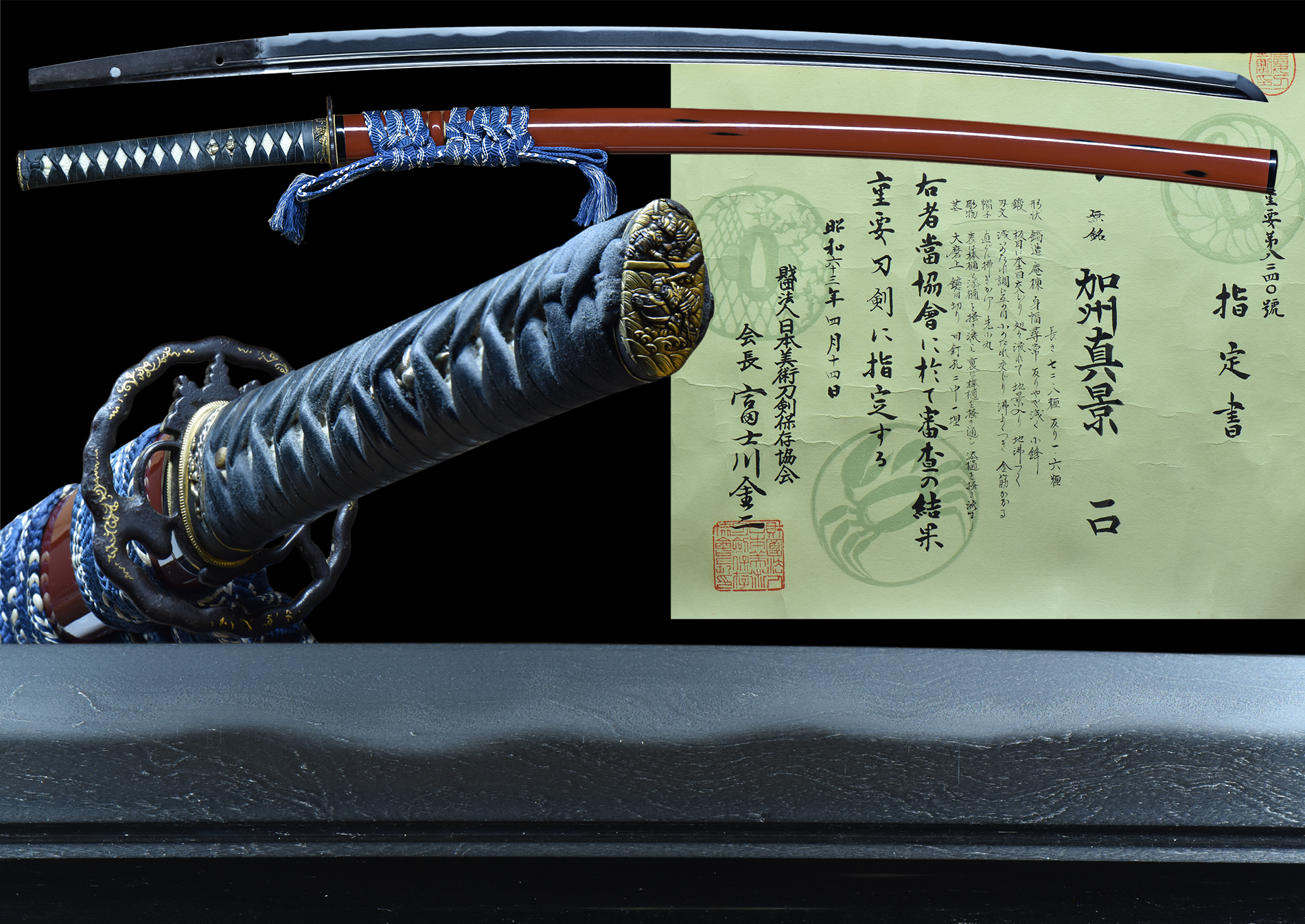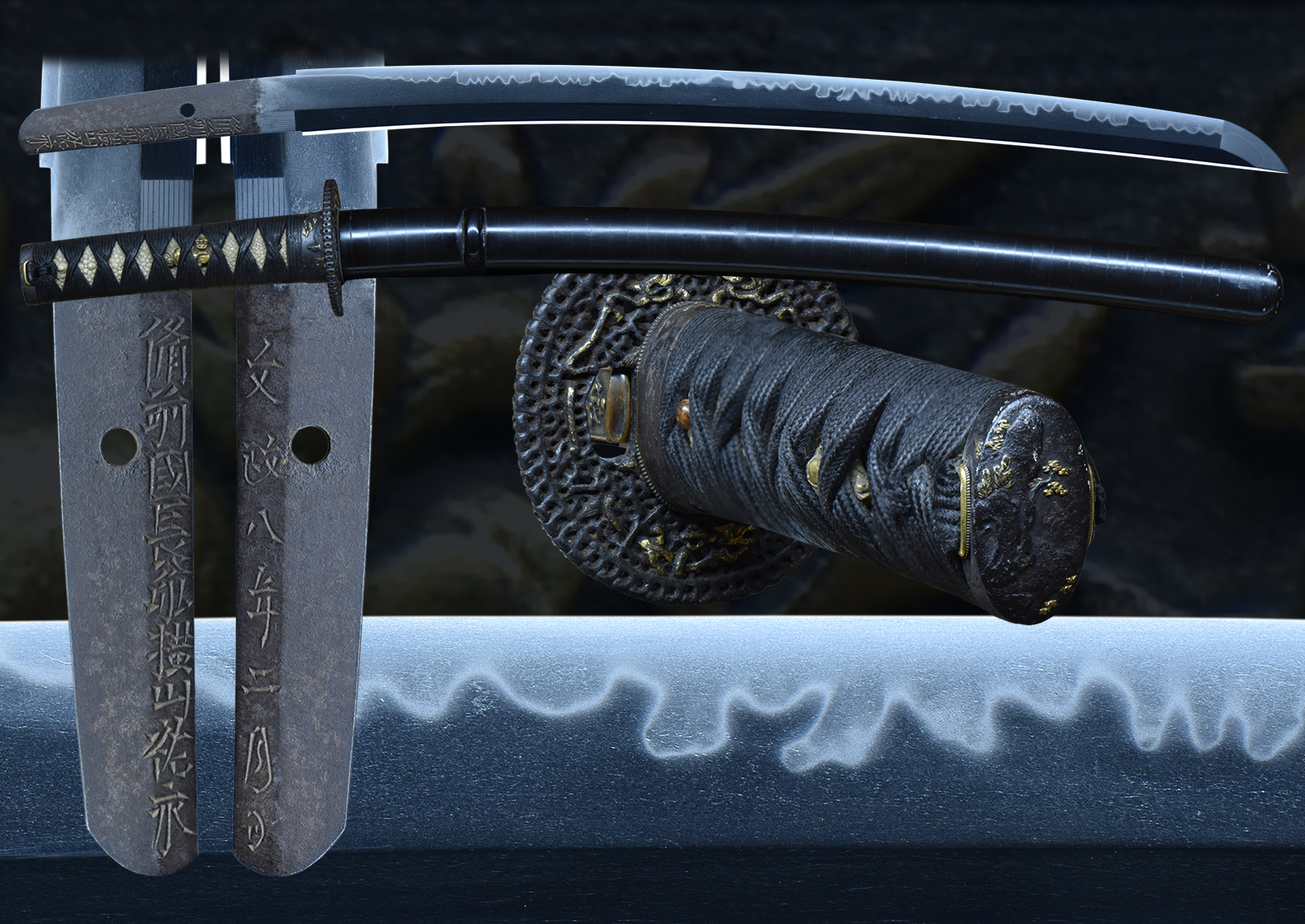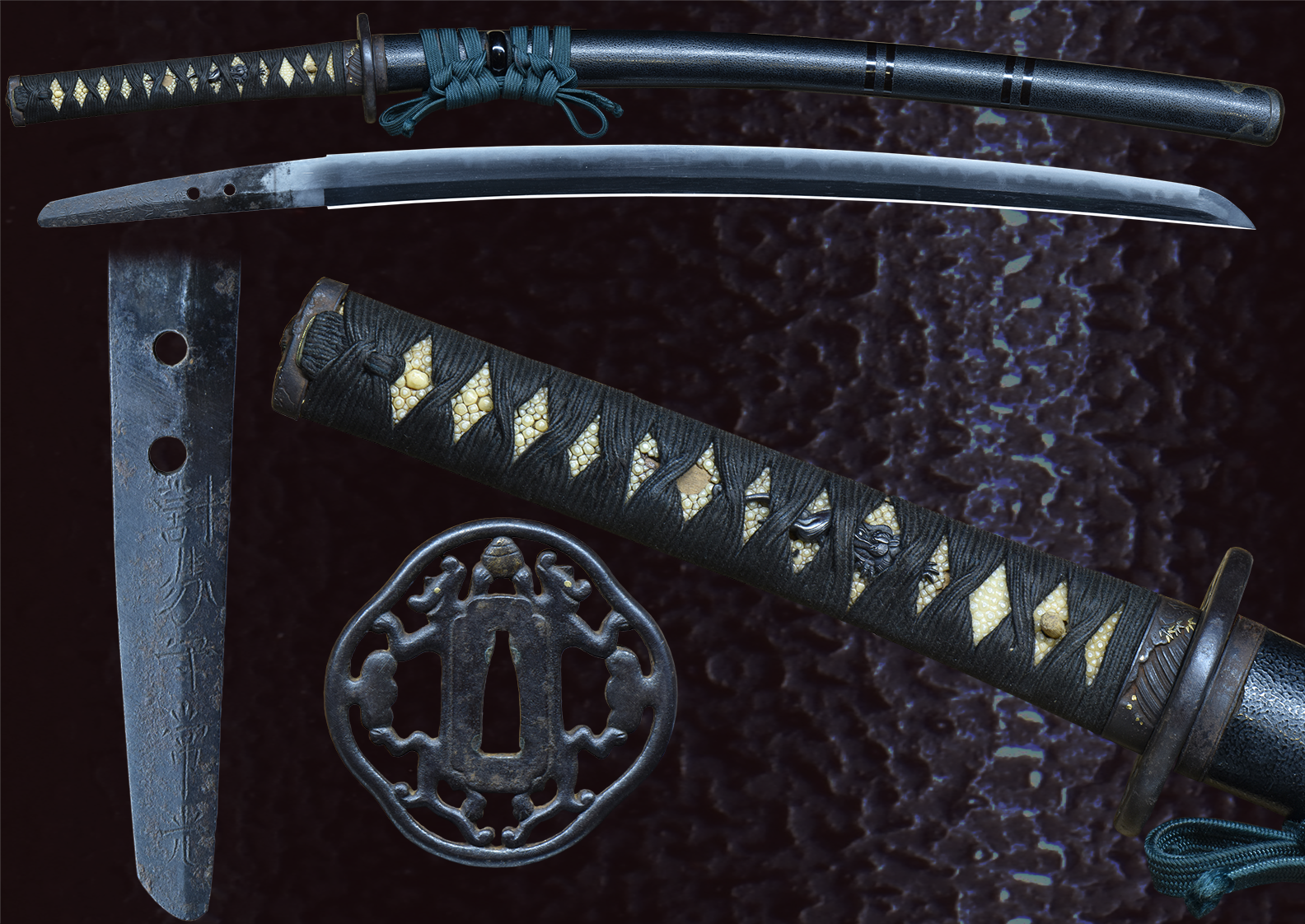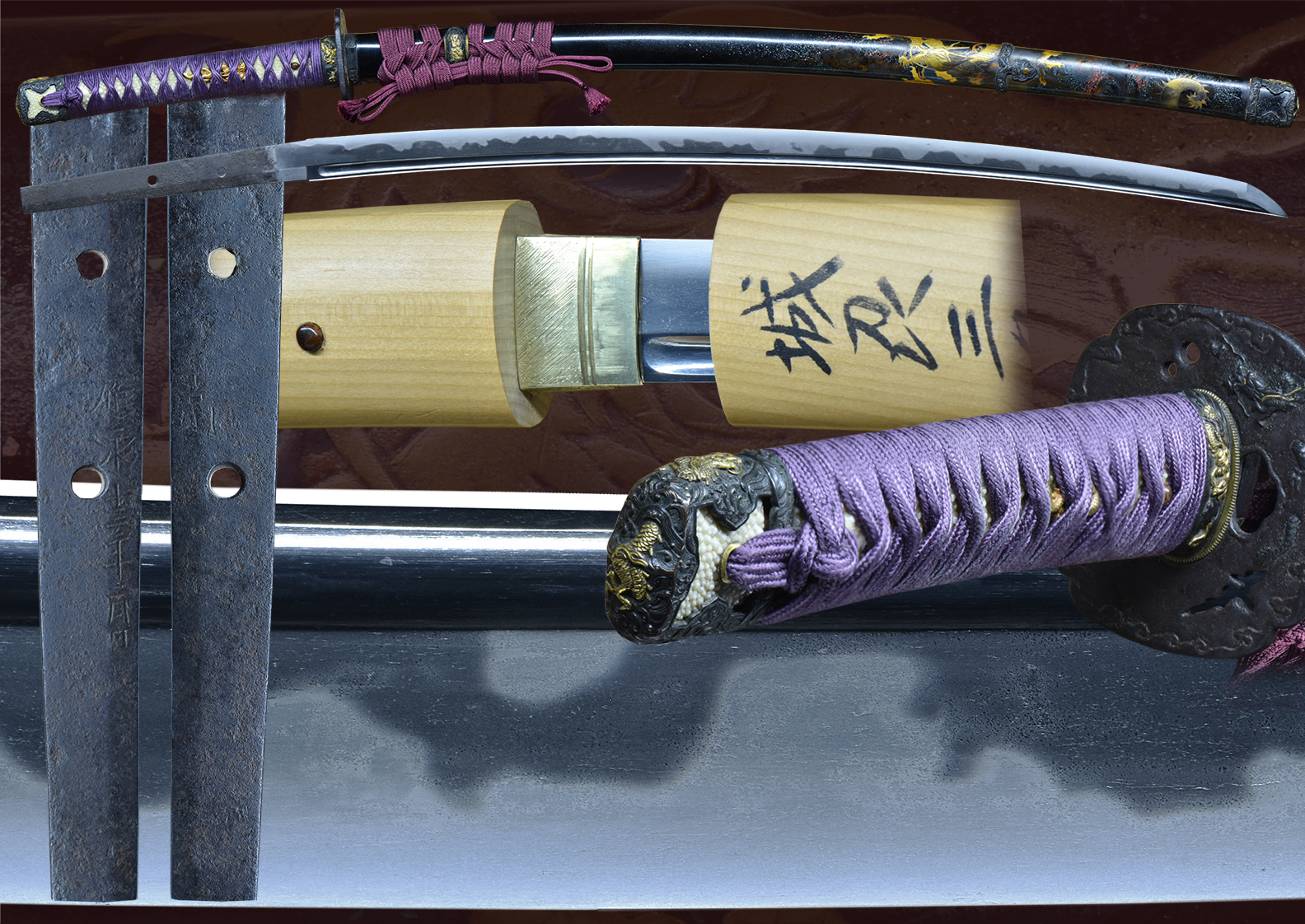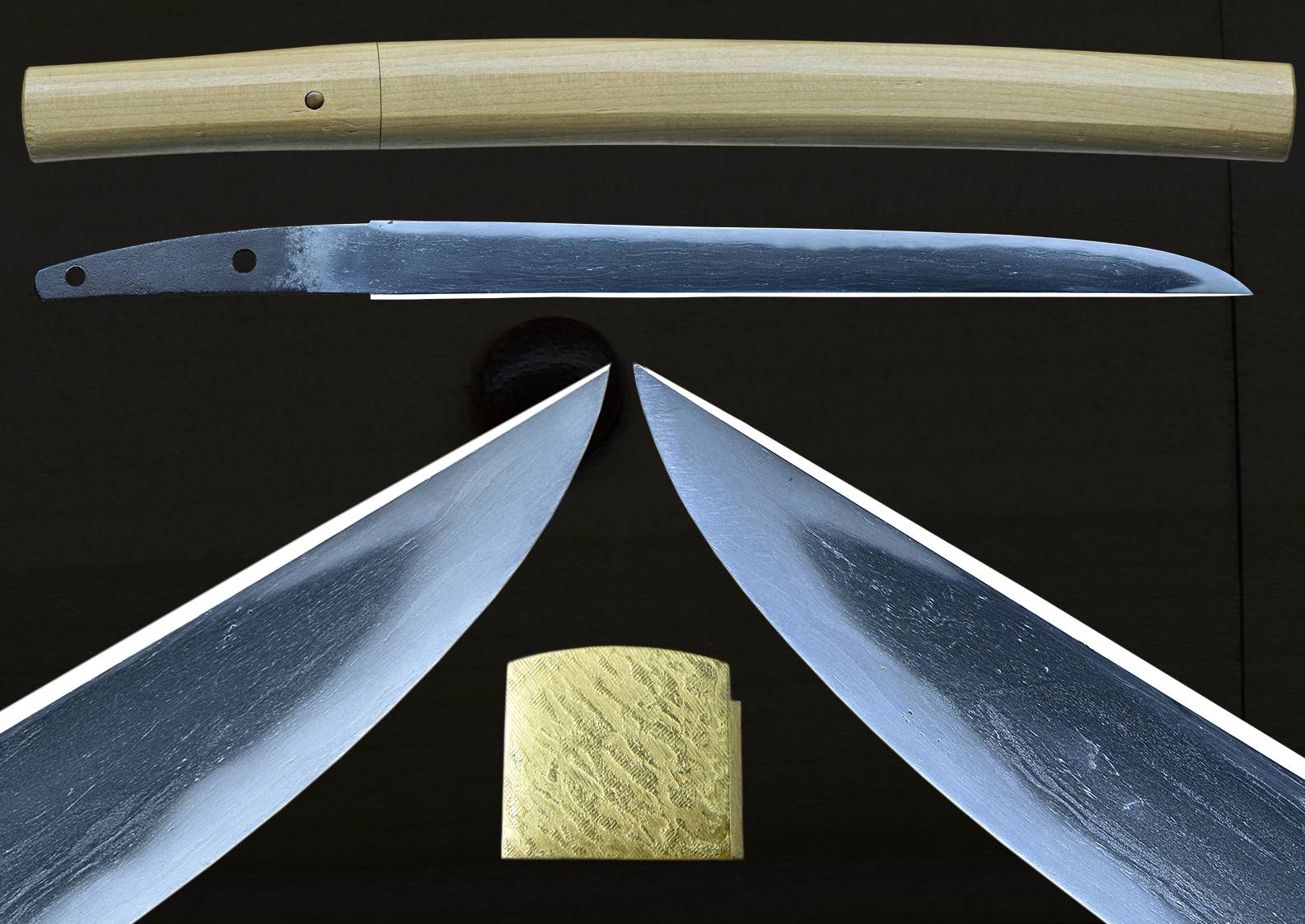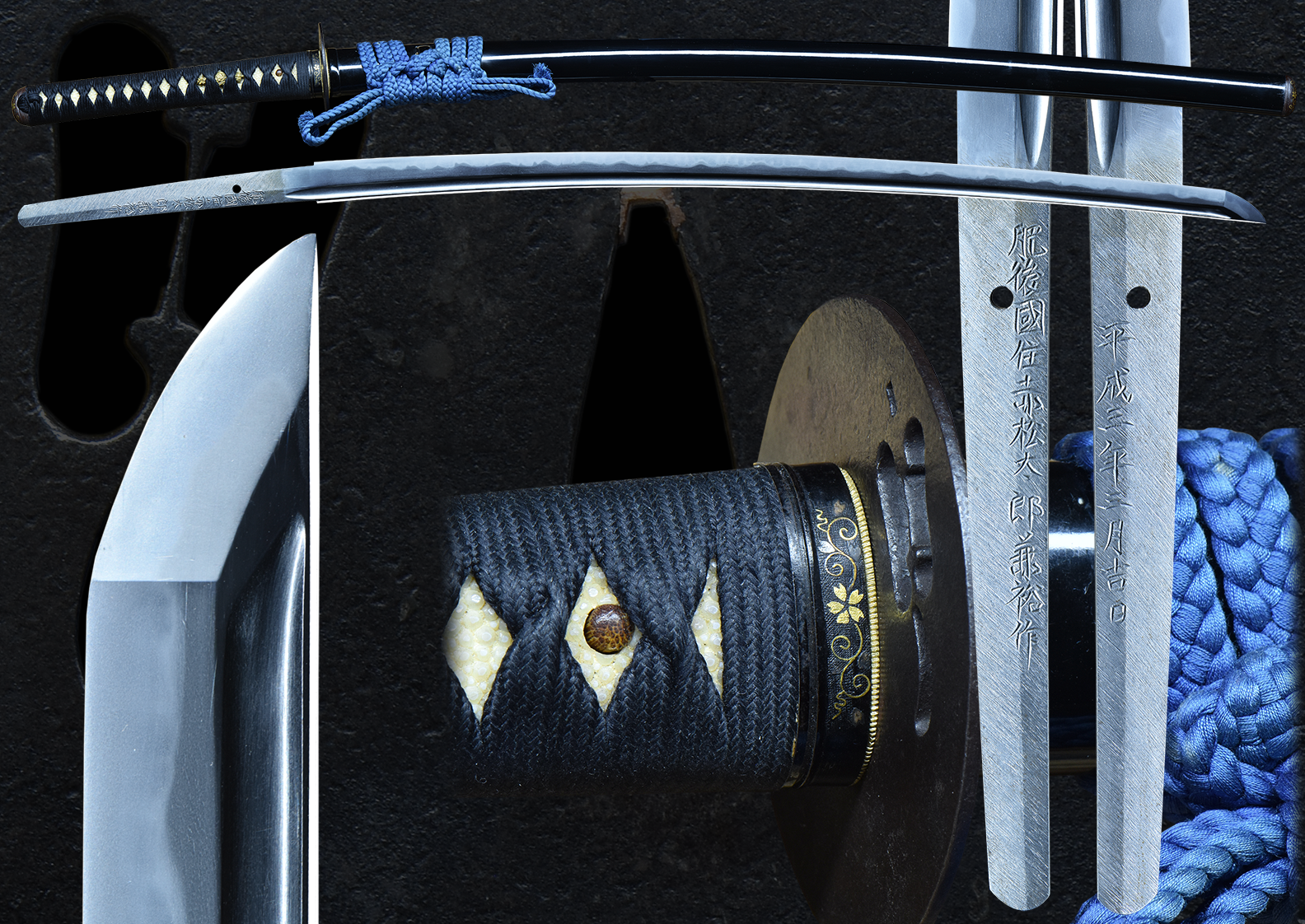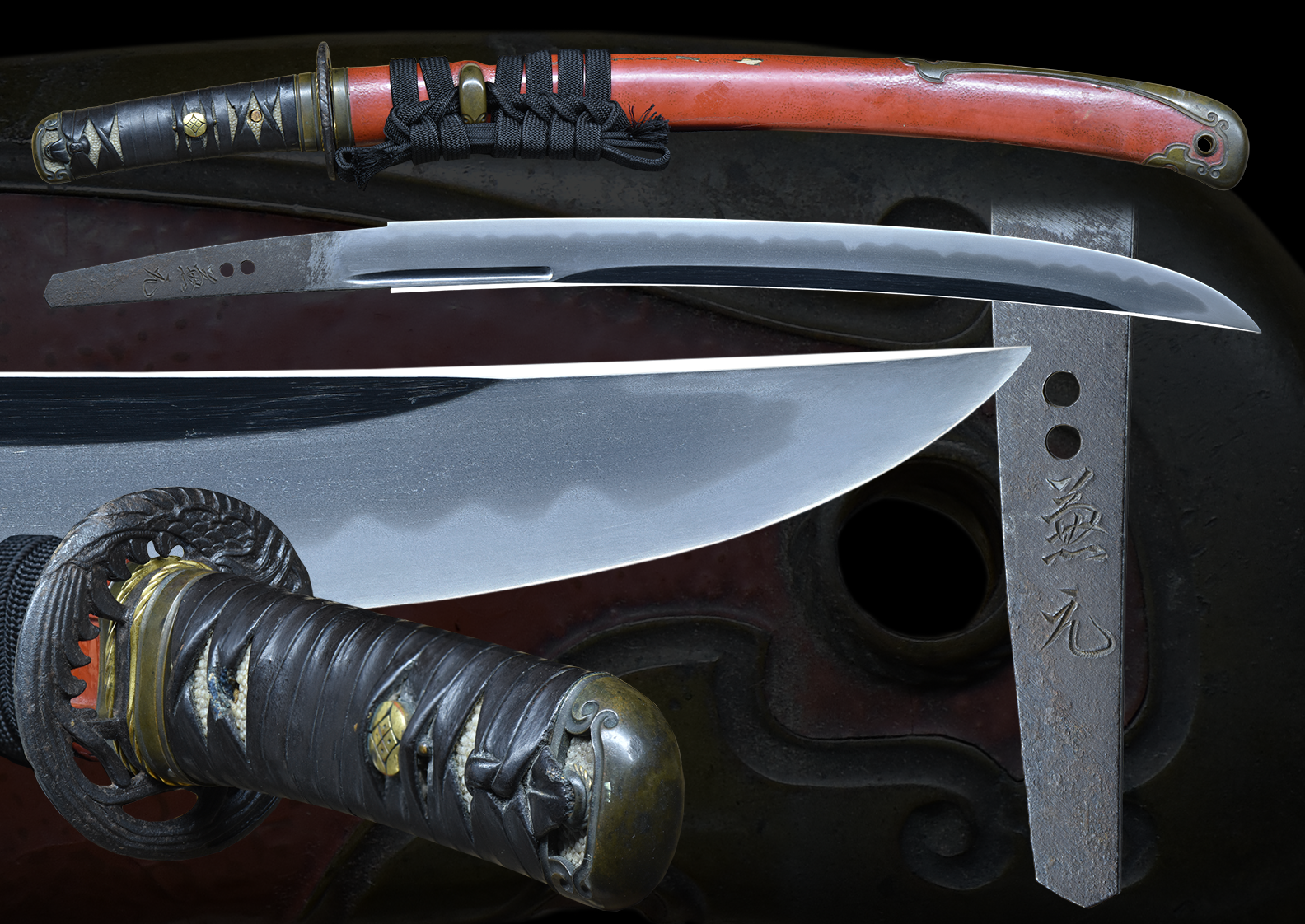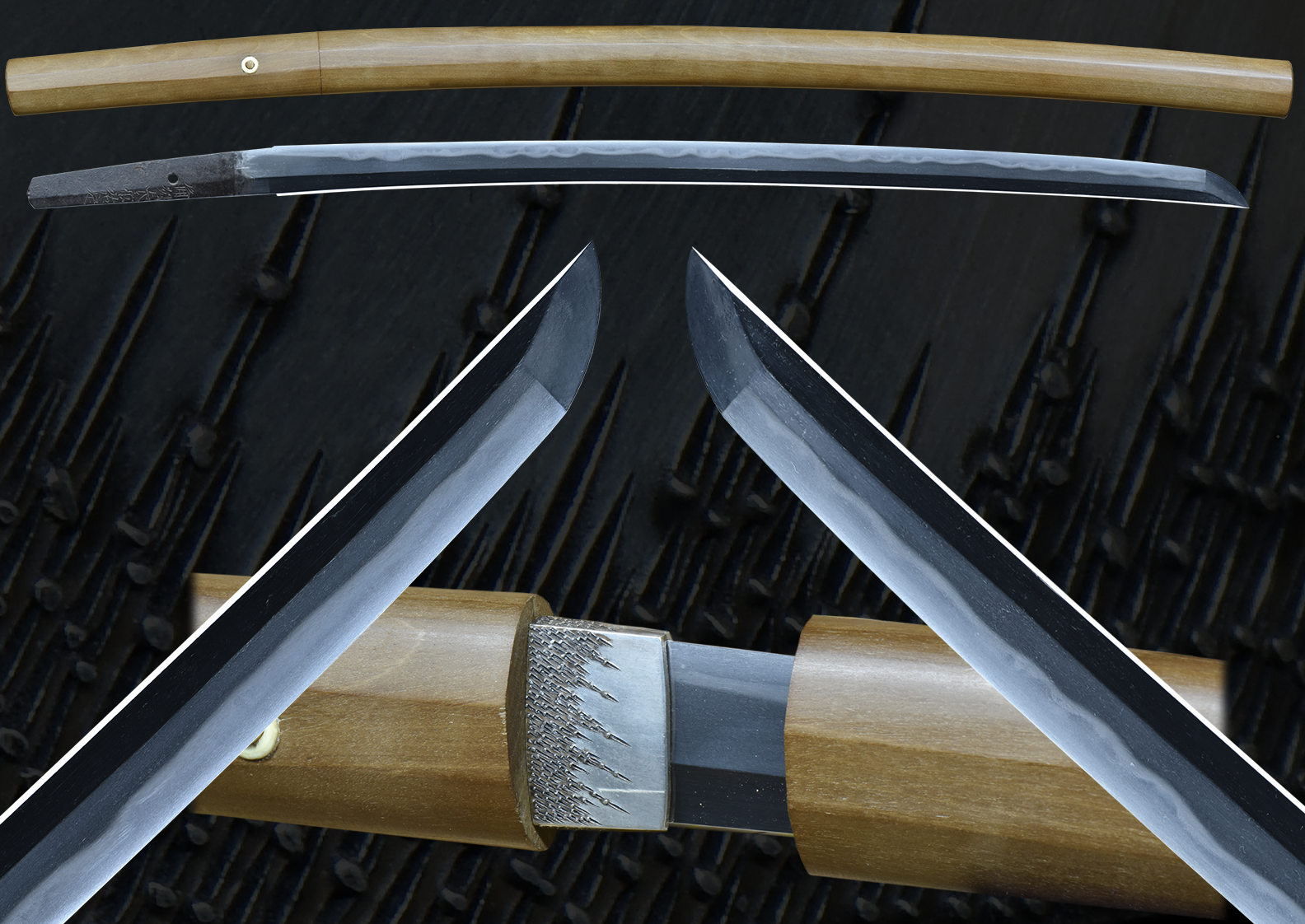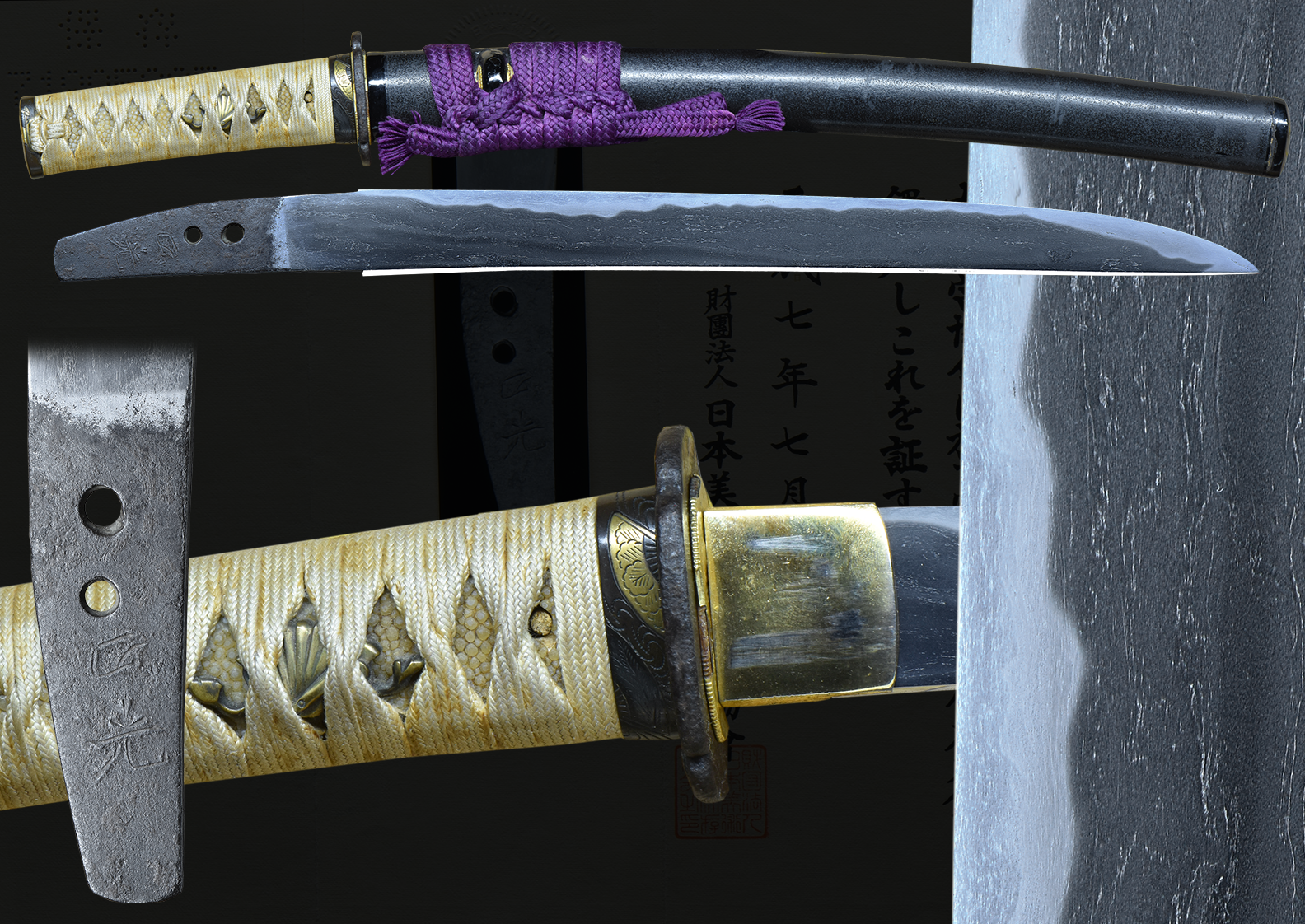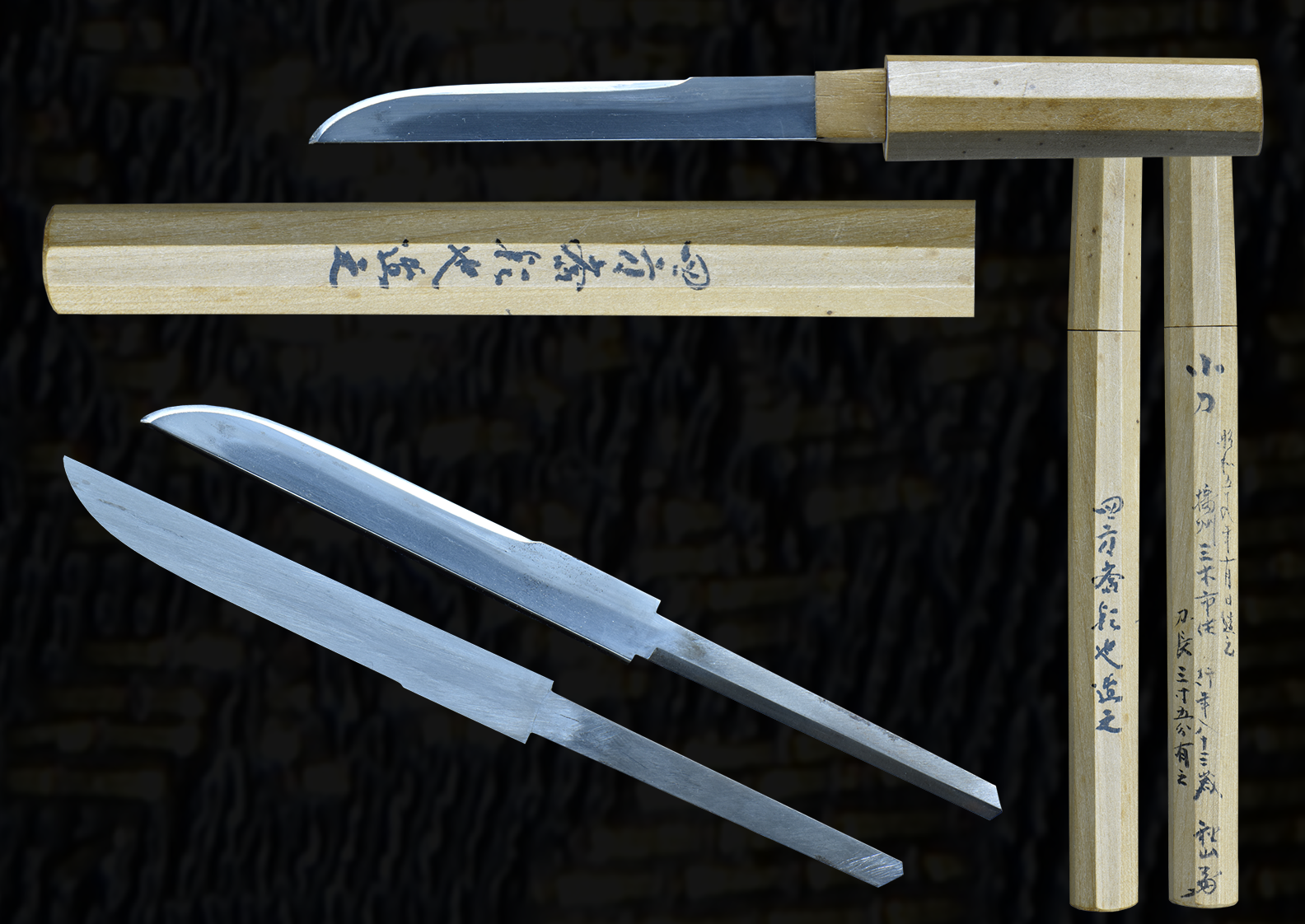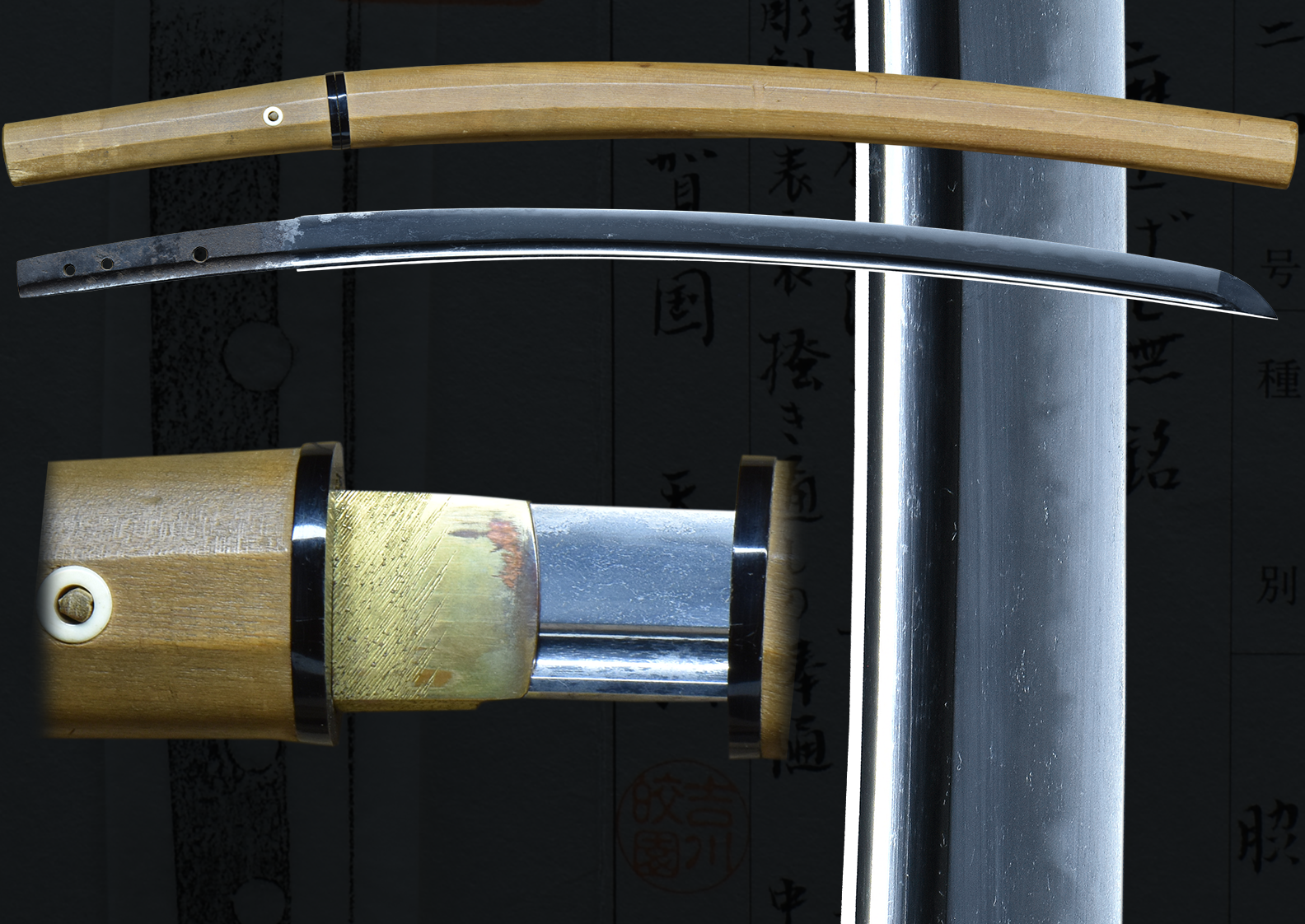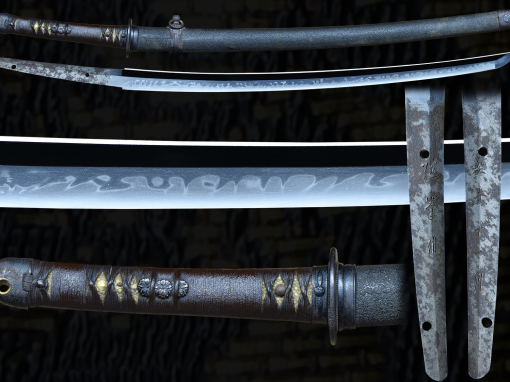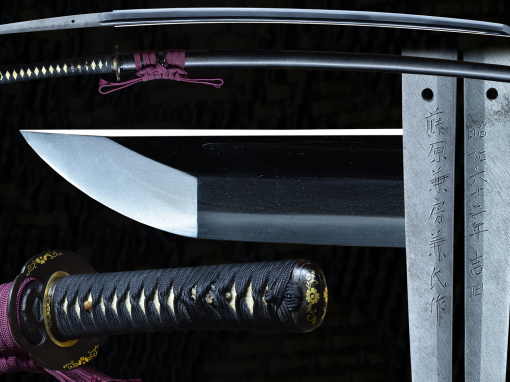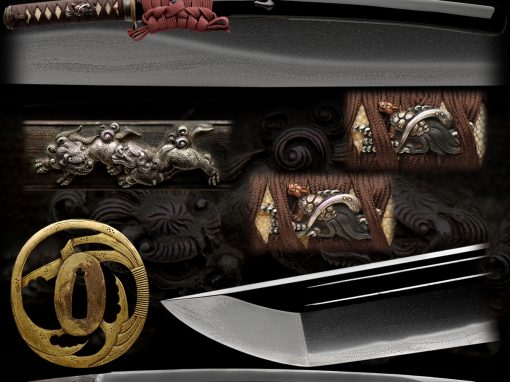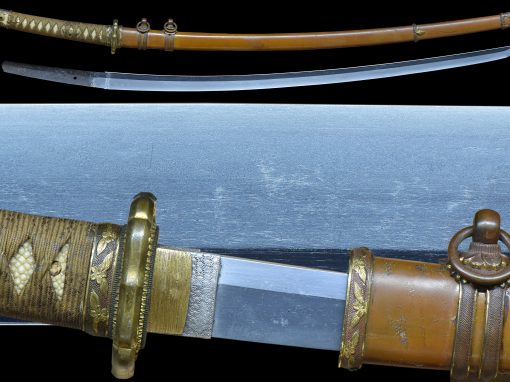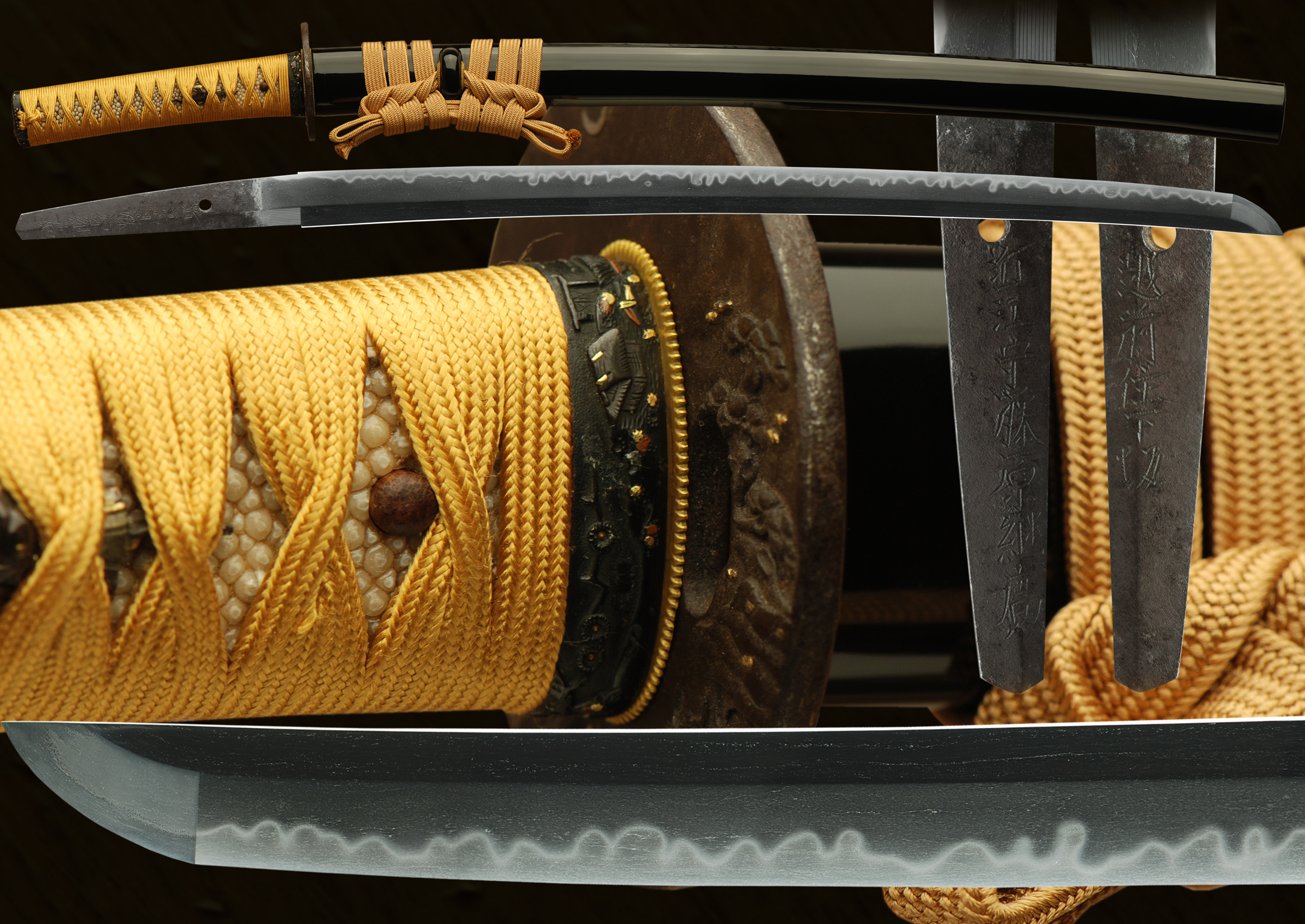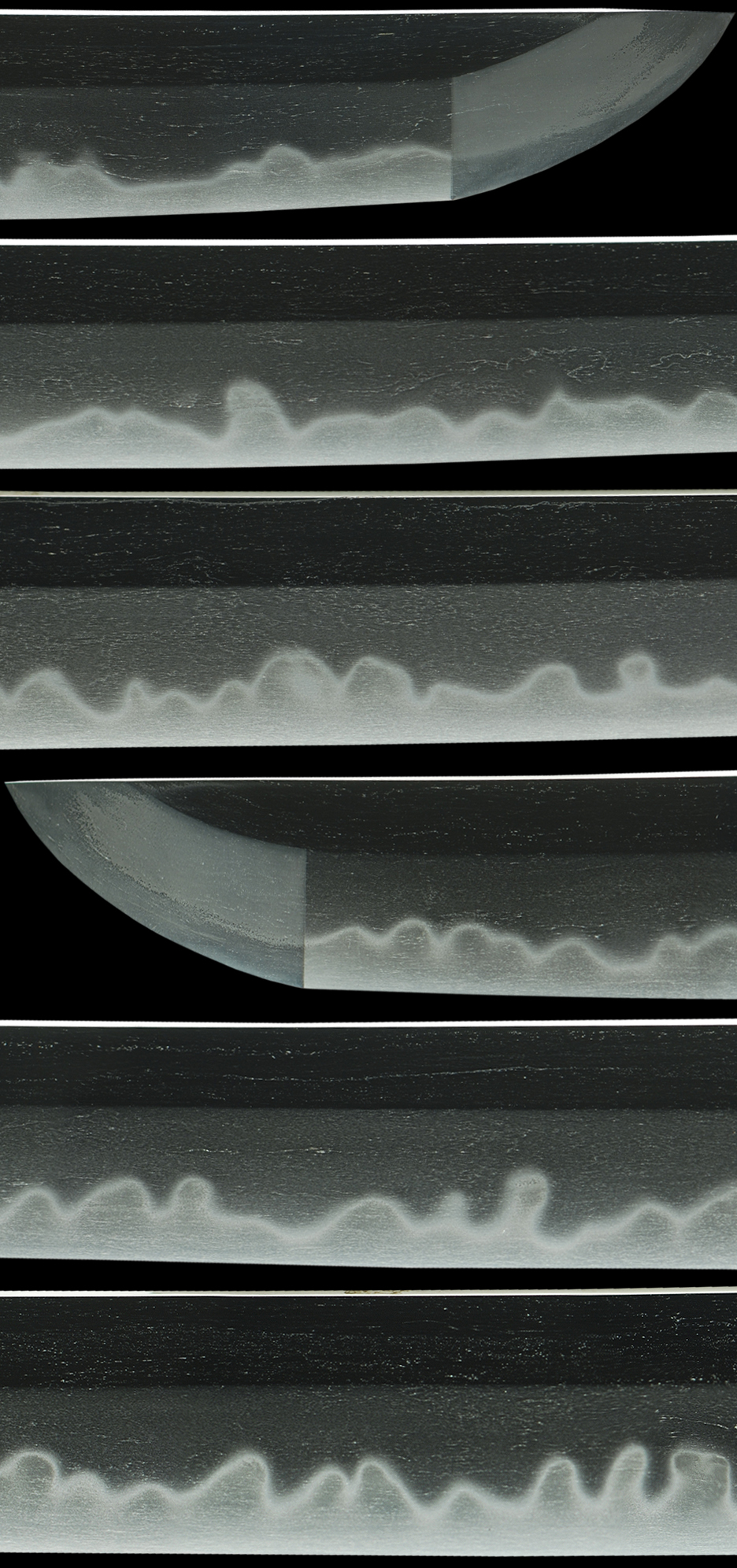According to the Fujishiro Shinto volume, Tsuguhiro is thought to have worked between Genna and Kyoho (1615 and 1716). A hundred years is a large span of time but the lack of dated works is difficult to assign an exact working period. However, other keys in the signature point to earlier than later. Fujishiro notes that around Kanbun (1661) Echizen works commonly have the information “Echizen Ju ” (resident of Echizen) inscribed separately on the ura of the sword, with the rest of the mei (such as title and name) on the omote. This work has the inscription ” Echizen ju shimosaka “on the ura, and contains the mei on the omote specifically including ” Omi no kami fujiwara tsuguhiro ” , a trait which is shared in the example Tsuguhiro mei in Fujishiro Shinto Hen, and is noted there as being quite unusual. Albert Yamanaka notes that Echizen smiths that include “Kuni” in their mei were associated directly with shodai Yasutsugu. Since the Shodai died in the seventh year of Genna (1623), we can surmise that Tsuguhiro’s working life is much closer to Genna than Kyoho, placing this sword in the earlier years of the Shinto period, and this work probably no later than Kanbun.
Tsuguhiro is rated as Chujosaku and Wazamono in the Shinto Hen. This work is very robust and bold. Omi no kami Fujiwara Tsuguhiro was a student
of the 3rd generation Yasutsugu.
He moved to Edo and made a multitude of swords.
He made swords like Yasutsugu hamon but sometimes
he made Choji midare and kobushi choji midare hamon
similar to Kawachi Kami Kunisuke 2nd generation.
He made different types of sword to compare
with Yasutsugu’s hamon.
The blade is healthy and wide and thick.
The shinogi line has masame style jigane clearly.
The hamon is a brilliant gunome/choji midare that undulates the entire length of the blade, tobiyaki appear. There is sunagashi, kinsuji and the nioi guchi is extremely bright and crisp. The hada is a blend of itame and mokume and layered with ji-nie. The boshi is ko-maru and hakikake can be seen. All and all an exquisite piece to enjoy! This sword is ubu with one mekugi ana.
The koshirae has a matching theme of a village hut with gentle stream flowing past, The Tsuba is an iron style with matching motif and a crescent moon can be seen in the sky.The menuki are of mice with gold inlay on their backs. The saya is finshed in a black gloss lacquer. The Tsuka-ito is gold and the sageo is a brownish gold. The Same ( rayskin ) is aged with a nice patina. There is a gold washed habaki and seppa also.
- Mei/Signed: (Omote)Omi no Kami Fujiwara Tsuguhiro (Ura) Echizen Ju Shimosaka
- Date: Kanbun (1661-1673)
- Nagasa: 19-5/8 inches
- Sori: 9.0 mm
- Width at the ha-machi: 30.7 mm
- Width at the yokote: 20.5 mm
- Thickness at the mune-machi: 6.9 mm
- Construction: Shinogi zukuri
- Mune: Iori
- Nakago: Ubu
- Kitae: Itame/mokume
- Hamon: Midare Chogi
- Boshi: Maru
- Condition: Good polish
(shipping and insurance included)
Email us if your interested in this item and remember to include the order number for this item: fss-777.
Click to Enlarge Image
Click to Enlarge Image
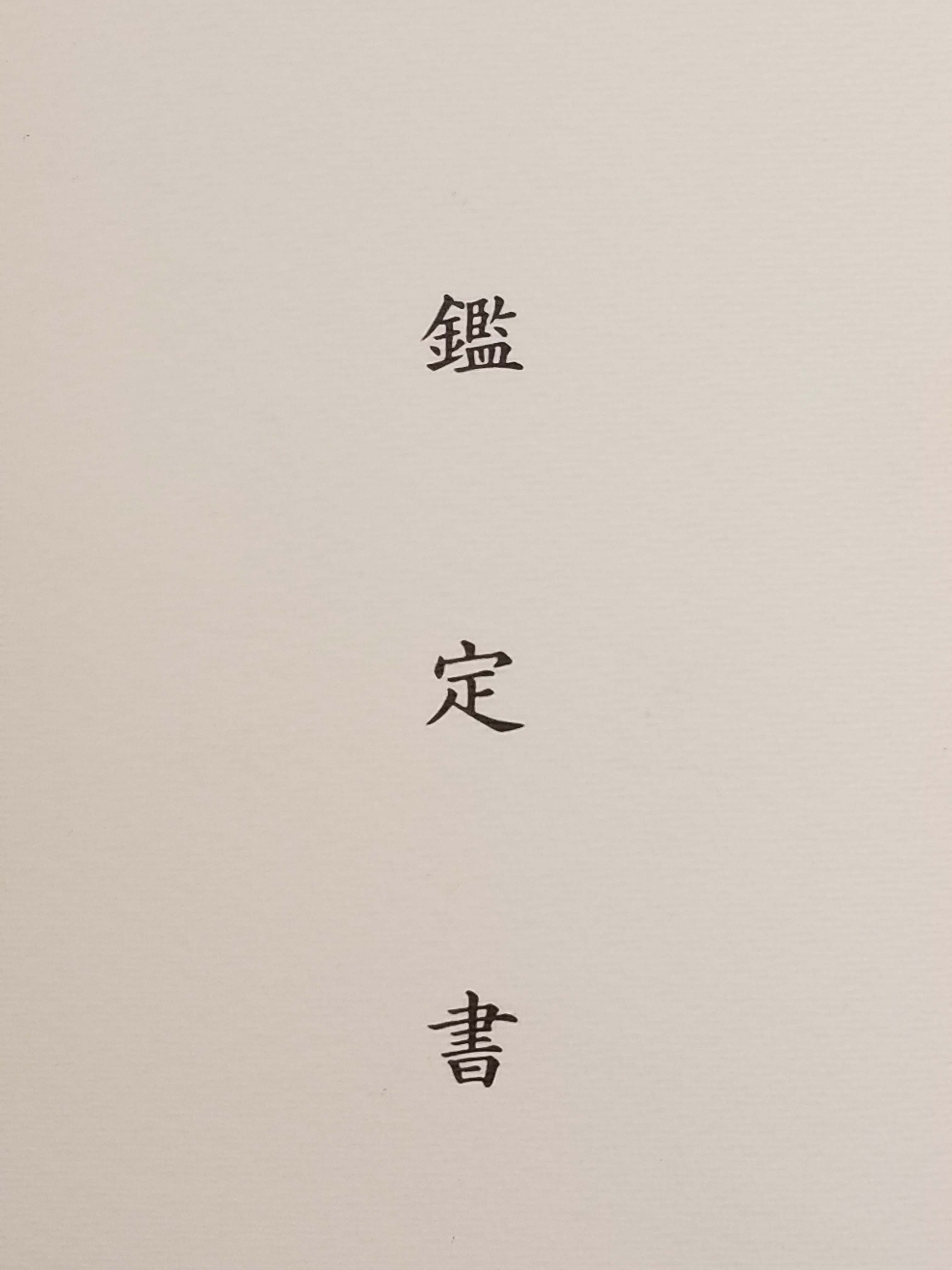
This sword has recently passed shinsa. The official papers will take a few month to be made and sent from Japan. These papers will be forwarded to the new owner when this sword sells.
For Sale
